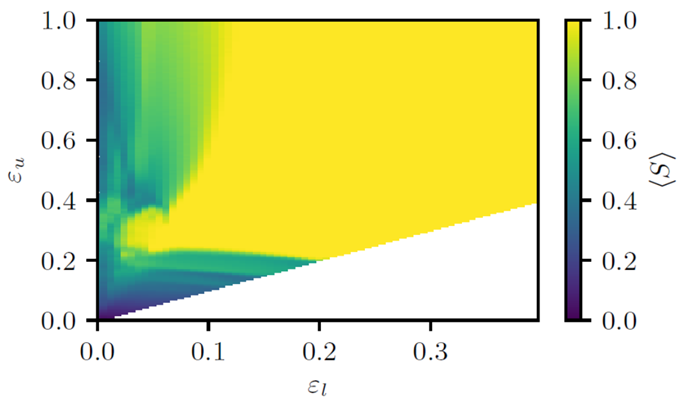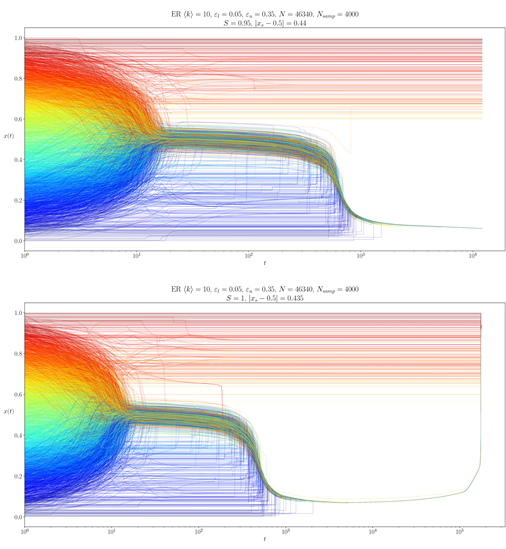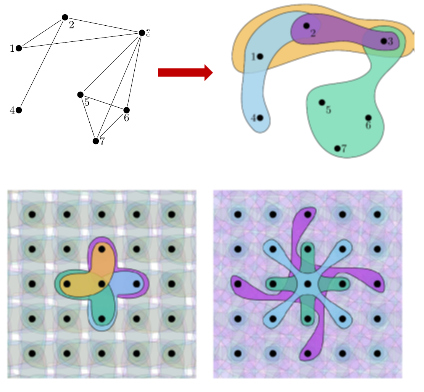The formation and diffusion of opinions in a society, can be formulated in terms of complex dynamical systems. From this perspective, instead of aiming at the understanding of the opinion formation in a particular case, models rather address questions concerning large-scale properties that are observed in many different real systems.
These models are stylized simplified versions of real societies which integrate, in general, the most widespread properties of human interactions considered by researchers in human sciences.
In the last decade, the generalization of the usage of social networks, allowed for large-scale phenomenological studies of the outcomes of these dynamical processes, leading to a wide collection of observations that, though limited to the users of these platforms, provide a widespread view in terms of geographical location, language, and cultural aspects of the involved social actors.
In order to be able to compare with data-based studies, more realistic models that integrate different properties of the agents and their interactions, observed in real societies are needed. As a model with too many parameters is hardly explanatory, it is necessary to identify the role of each of these properties on the outcomes of the dynamics. Below are the steps followed by the OpLaDyn team for such study
- Introducing agents with heterogeneous idiosincratic properties in a mixed-population, bounded confidence mo

H. Schawe and L. Hernandez, Scientific Reports volume 10, Article number: 8273 (2020) del. In this study we show how considering that not all the agents have the same tendency to interact with others holding a dissimilar opinion, may have paradoxical consecuences on the way in which consensus is reached in society.
- Modeling the cost of the changing one’s opinion. In some situations, changing one’s opinion implies a modification of one’s behaviour. In this article we show that if the initial distribution of resources guarantees that every agent

H. Schawe and L. Hernandez. Scientific Reports volume 10, Article number: 13825 (2020) in the society has a minimum amount of resources to afford the change, then no phase transition is observed and the effect of increasing the cost simply leads again to a smooth decrease of the largest opinion cluster. On the other hand, when the society contains “extremely poor” agents a sharp transition to fragmentation appears.
- Network effects in a homogeneous bounded confidence model.
In this article we show how going beyond the mixed population paradigm. In fact an agent is not potentially in contact with any other one in the society, instead, each agent has a social network of potential contacts. In this work we show that the existence of dynamical bridges in the network lowers the confidence threshold for consensus, shifting it to zero in the thermodynamic limit. To unveil this fact, it is necessary to study the behaviour of the order parameter, the average size of the largest opinion cluster, <S>, instead of the probability of unanimity as had been done in previous studies.

- Combining both heterogeneous agents in heterogenous media. (work in progress)

R. Perrier, H.Schawe, and L.Hernandez (work in progress) Social actors are neither homogeneous, nor they hold homogeneous contacts. Here we study the combined effec of introducing heterogeneous confidences in a Hegselmann-Krause model in a networked society. We show how the dynamics is affected by combining both heterogeneities. Strong finite size effects are observed, stressing the importance of studying system sizes that go well beyond the standards in the literature. We show that the dynamical bridges observed in a previous work, combines with the heterogeneity in confidence to allow a regime where a few agents may lead the society to extreme opinions and eventually turn this extreme opinion into the opposite one.
- Introducing higher order interactions. Bounded confidence models in hypergraphs.

Here, we define a higher order Deffuant model by generalizing the original pairwise interaction model to interactions involving a group of agents of size k. The
generalized model is naturally encoded in a hypergraph. We show that including higher order interactions induces a drastic change in the onset of consensus for random hypergraphs; instead of the sharp phase transition, characteristic
of the dyadic Deffuant model, the system undergoes a smooth size independent
crossover to consensus, as the confidence value increases. This phenomenon is absent from regular hypergraphs, which conserve a phase transition.
